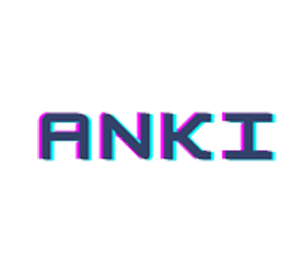The dark web as digital primitivism or hyper-modernity?

The dark web is often portrayed in binary terms: a lawless digital wilderness or a cutting-edge playground for cyberpunk visionaries. Yet this space defies such simplistic narratives. Beneath its hidden services, encrypted forums, and illicit marketplaces lies a fascinating tension between digital primitivism and hyper-modernity.
Is the dark web a step backward to decentralized, tribal models of social organization? Or is it a glimpse into the hyper-modern future, where anonymity, decentralization, and self-sovereignty redefine the digital landscape? The answer is: both.
Digital Primitivism: A Return to Decentralized Roots
Tribalism Reborn in Digital Form
In many ways, the dark web revives ancient social structures:
- Small, tight-knit communities form around shared values, not geography.
- Reputation and trust are earned through direct interaction, much like traditional tribal societies.
- Hierarchies are flattened, with authority often resting on technical prowess rather than formal titles.
These characteristics mirror pre-modern social orders, where community membership,
mutual aid, and personal reputation were paramount.
Barter, Gift Economies, and Counter-Economics
Many darknet platforms operate outside conventional capitalist frameworks:
- Barter systems exist alongside cryptocurrency transactions.
- Informal gift economies thrive in forums sharing privacy tools, tutorials, and leaks.
- Counter-economic practices align with agorist ideals, emphasizing voluntary exchange beyond state control.
This economic primitivism—devoid of regulatory oversight or corporate mediation—harkens
back to simpler, peer-driven exchanges.
The Aesthetic of Digital Primitivism
Even the design of many .onion sites evokes a primitive feel:
- Text-heavy interfaces, devoid of sleek corporate UX design.
- Minimal graphics, often limited to ASCII art or crude logos.
- Forums resembling 1990s message boards, fostering raw, unfiltered dialogue.
This aesthetic is not due to technical limitations, but a conscious rejection of mainstream
web conventions.
Hyper-Modernity: The Dark Web as a Technological Vanguard
Cutting-Edge Cryptography and Privacy Technologies
While its social structures appear primitive, the dark web is a hotbed of technological
innovation:
- Advanced encryption protocols like onion routing, zero-knowledge proofs, and homomorphic encryption are foundational.
- Privacy coins such as Monero and Zcash push financial technologies beyond mainstream capabilities.
- Darknet-exclusive protocols (e.g., I2P, Freenet) represent alternatives to the clearnet's centralized internet architecture.
In this sense, the dark web is hyper-modern—adopting technologies years before they reach
mainstream adoption.
Decentralization as the New Digital Frontier
The dark web is at the forefront of decentralization:
- Peer-to-peer marketplaces eliminate central servers.
- Decentralized Autonomous Organizations (DAOs) operate in darknet communities, replacing traditional governance models.
- Self-sovereign identity projects (as discussed previously) reimagine citizenship in digital terms.
This hyper-modern decentralization challenges not only nation-states but also Big Tech’s
monopolistic grip on digital life.
The Hyper-Acceleration of Subcultures
Darknet forums accelerate subcultural formation at unprecedented rates:
- Niche ideologies—crypto-tribes, digital anarchists, radical privacy advocates—emerge rapidly.
- Memes, manifestos, and technological practices evolve in self-contained digital ecosystems.
- This mirrors what theorists call “hyperstition”—fictions that become real through collective belief and action.
The dark web thus becomes a hyper-modern incubator for fringe ideas, many of which later
influence mainstream tech and policy debates.
The Coexistence of Primitive and Hyper-Modern Elements
Digital Primitivism as a Reaction to Hyper-Modern Excess
The dark web’s primitive elements can be seen as a response to hyper-modern excesses:
- Rejection of algorithmic curation and data-driven social engineering.
- Desire for authentic, unmediated human interaction, free from surveillance capitalism.
- Rebuilding community structures that corporate platforms have eroded.
Thus, digital primitivism becomes a form of resistance—a deliberate regression to reclaim agency.
Hyper-Modern Tools Enabling Primitive Structures
Paradoxically, the very technologies that define hyper-modernity enable these primitive
structures:
- Tor’s onion routing allows the formation of isolated, tribe-like communities.
- Cryptographic tools ensure the privacy necessary for intimate, trust-based interactions.
- Decentralized platforms replicate ancient models of consensus and mutual aid in digital form.
The dark web’s primitivism is not a technological limitation—it is a hyper-modern choice
facilitated by cutting-edge tools.
Philosophical Interpretations: Digital Nomadism and Post-State Existence
Digital Primitivism as Post-Modern Nomadism
Philosophers liken darknet users to digital nomads:
- They traverse hidden networks, forming ephemeral communities.
- Their allegiances are fluid, dictated by shared interests rather than static identities.
- This mirrors pre-agricultural nomadic tribes but in a hyper-connected digital context.
Hyper-Modernity and the End of the Nation-State
Some see the dark web as a glimpse into a post-state future:
- When identity, commerce, and governance become decentralized, the relevance of physical nation-states diminishes.
- The darknet’s structures offer prototypes for future societies where digital sovereignty supersedes geographical borders.
In this view, the dark web is not a fringe anomaly but a harbinger of what the internet—and
perhaps society—might become.

